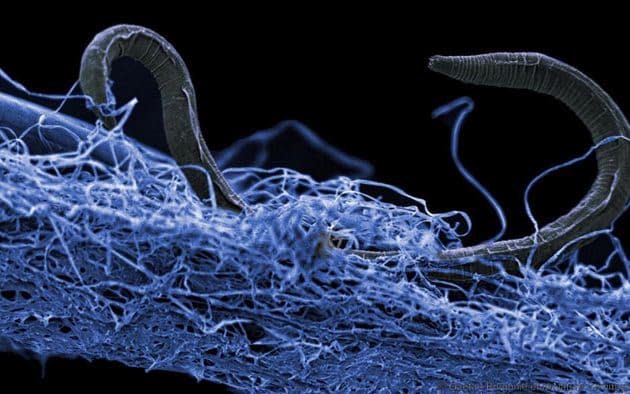'Zombie' bacteria hint life on Earth began deep underground

Earth is teeming with life miles beneath the surface, scientists have discovered, leading to speculation that our distant ancestors may even have evolved deep underground.
Researchers at the Deep Carbon Observatory (DCO) said they had found barely-living ‘zombie’ bacteria and tiny worms, inhabiting entirely new ecosystems more than three miles into the crust.
The lifeforms are so numerous that their mass may be up to 385 times that of all humans.
And some are so odd and striking, living for millions of years without replicating, that scientists may need to rewrite the fundamental concept that all cellular life can be divided into three domains of archaea, bacteria, and eukaryote.
“They are not Christmas ornaments, but the tiny balls and tinsel of deep life look they could decorate a tree as well as Swarovski glass,” said Dr Jesse Ausubel, of The Rockefeller University, a founder of the DCO, which is made up of dozens of international researchers.
“Why would nature make deep life beautiful when there is no light, no mirrors?"

The team, which includes scientists from Oxford and Bristol universities, and University College London, drilled one and a half miles into the seabed and searched the world’s deepest mines looking for microbes deep within the planet.
They found that the mass of life underground would fill up twice the volume of all the world’s oceans and is so diverse that it has been dubbed a ‘subterranean Galapagos,’ with tiny creatures existing on strange diets of rock and methane which can live at temperatures up to 249F (121C).
Dr Mitch Sogin, Co-chair of the Marine Biological Laboratory, Woods Hole, US, said: “Exploring the deep subsurface is akin to exploring the Amazon rainforest. There is life everywhere, and everywhere there's an awe-inspiring abundance of unexpected and unusual organisms.
“Molecular studies raise the likelihood that microbial dark matter is much more diverse than what we currently know it to be, and the deepest branching lineages challenge the three-domain concept introduced by Carl Woese in 1977.”
The researchers are hoping their work could help answer the question of whether life started deep in the Earth, possibly in hydrothermal vents, before migrating up towards the Sun.
They also want to find out how life below the surface, influences that above.

And finding organisms which can exist in the deepest, darkest places on Earth might will help those looking for microbes on other planets understand the conditions that can support life, even when it seems impossible.
“Our studies of deep biosphere microbes have produced much new knowledge, but also a realization and far greater appreciation of how much we have yet to learn about subsurface life," said Dr Rick Colwell, of Oregon State University.
“For example, scientists do not yet know all the ways in which deep subsurface life affects surface life and vice versa.
“And, for now, we can only marvel at the nature of the metabolisms that allow life to survive under the extremely impoverished and forbidding conditions for life in deep Earth.”
The new research was presented at the American Geophysical Union’s annual meeting.

 Yahoo News
Yahoo News 